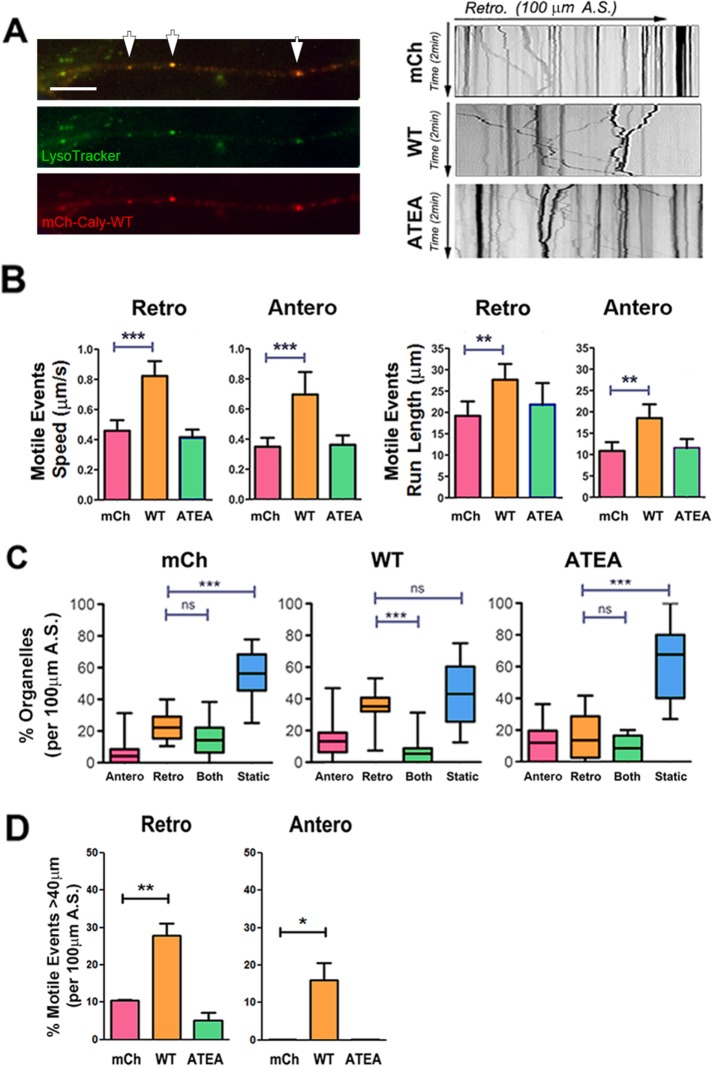FIGURE 7:
Caly-WT but not Caly-ATEA increases the motility of LysoTracker-labeled LE/LROs. (A) Left panels, colocalization of LysoTracker (green) and mCh-Caly-WT (red). Arrows point to overlapping puncta. Right panels, representative kymographs of LysoTracker-labeled organelles in axons transfected with mCherry (mCh), mCh-Caly-WT (Caly-WT), and mCh-Caly-ATEA (Caly-ATEA). (B) Average speeds and run lengths of anterograde as well as retrograde motile events are higher in Caly-WT axons, whereas values detected in Caly-ATEA axons do not differ from control. (C) Retrogradely moving LysoTracker-labeled organelles are more common in Caly-WT axons relative to static or bidirectional organelles. (D) Retrograde and anterograde motile events with long-distance (>40 μm) trajectories are more common in Caly-WT axons. Data shown in bar graphs (mean ± SEM) and box-and-whisker plots (mean ± 95% CI) reflect results obtained in three independent experiments, involving at least five axons per group in each experiment; *p < 0.05, **p < 0.01, ***p < 0.001; A.S., axon segment, bar = 20 μm.

